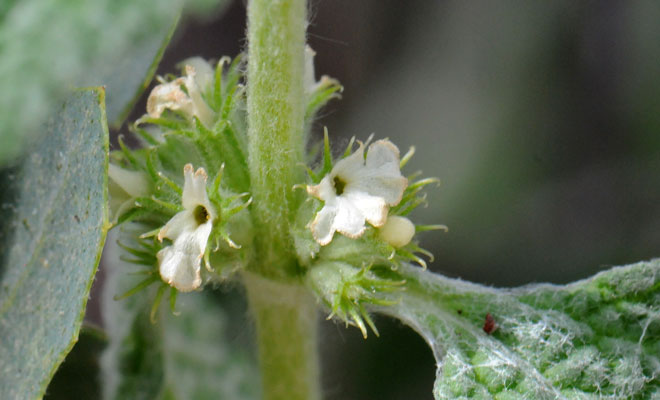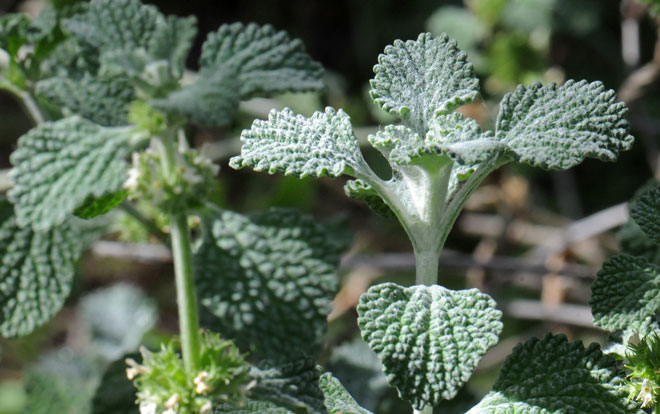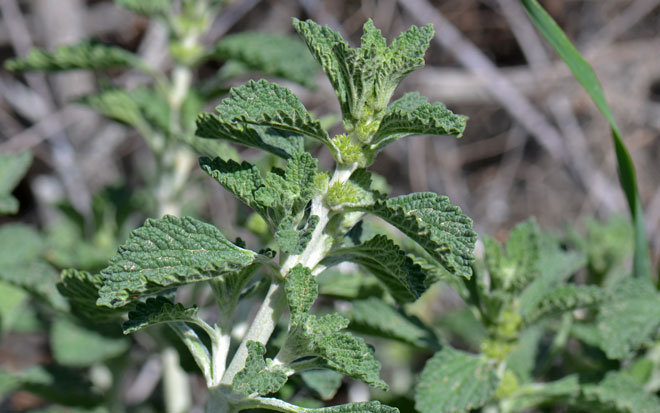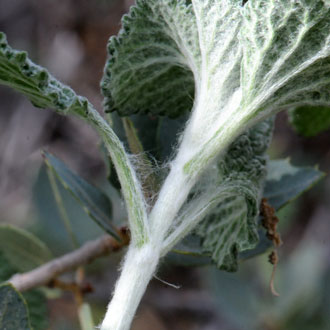Marrubium vulgare, White Horehound





Scientific Name: Marrubium vulgare
Common Name: White Horehound
Also Called: Common Horehound, Horehound (Spanish: Mastrán, Marrubio, Marrufo)
Family: Lamiaceae or Mint Family
Synonyms: ()
Status: Introduced
Duration: Perennial
Size: Up to 3 feet or more.
Growth Form: Subshrub; white woolly stems.
Leaves: Grayish-green, green; leaves pubescent with crinkled surfaces.
Flower Color: White; flowers in clusters on upper end of main stem in leaf axils, fruit a nutlet.
Flowering Season: April to September.
Elevation: 1,000 to 8,000 feet.
Habitat Preferences: Along roads, riparian and moist areas.
Recorded Range: White Horehound is found throughout most of the United States and parts of Canada. It is also an introduced species in Baja California, Mexico and South America. In Arizona it is found throughout all of the state in preferred habitats.
North America & US County Distribution Map for Marrubium vulgare.
U.S. Weed Information: Marrubium vulgare is listed in: Weeds of the West. Plants included here may become weedy or invasive.
Invasive/Noxious Weed Information: No information available.
Wetland Indicator: In North America Marrubium vulgare has the following wetland designations; Alaska, FAC; Arid West, FACU; Atlantic and Gulf Coastal Plain, FACU; Eastern Mountains and Piedmont, UPL; Great Plains, FACU; Midwest, FAC; Northcentral & Northeast, FACU and Western Mountains, Valleys, and Coast, FACU.
FAC = Facultative, occur in wetlands and non-wetlands
FACU = Facultative Upland, usually occur in non-wetlands, but may occur in wetlands.
Threatened/Endangered Information: No information available.
Comments: White Horehound is native to Europe and northern Africa and southwestern and central Asia and naturalized throughout most of the United States and parts of Canada and Mexico.
White Horehound has been used for a variety of botanical uses including for cold remedies and cough medicine by indigenous peoples. See all ethno-botanical uses at Native American Ethnobotany, University of Michigan, Dearborn.

